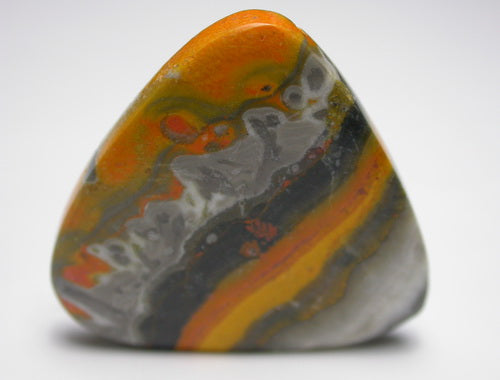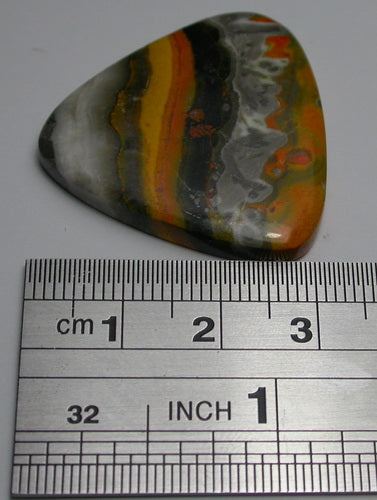1
/
of
3
cherrygemssg
Natural Bumble Bee Jasper 4BB168
Natural Bumble Bee Jasper 4BB168
Regular price
$25.00 SGD
Regular price
Sale price
$25.00 SGD
Unit price
/
per
Shipping calculated at checkout.
Couldn't load pickup availability
Jasper is a type of opaque and fine-grained chalcedony, which is a microcrystalline variety of quartz. It is a popular gemstone due to its wide range of colors and unique patterns. The name "jasper" is believed to have originated from the Greek word "iaspis," which means "spotted stone."
Jasper is found in various locations around the world, and each region produces distinct varieties with their characteristic colors and patterns. Some of the most common colors of jasper include red, yellow, brown, green, and blue, but it can also be found in shades of gray, black, white, and even purple.
One of the most fascinating aspects of jasper is its diverse and intricate patterns, which often resemble landscapes, scenic views, or abstract art. These patterns are created by the presence of other minerals and impurities during the formation of the stone. Some well-known jasper varieties and their distinctive features include:
Picture Jasper: This type of jasper features scenic or landscape-like patterns, often resembling desert scenes, forests, or mountains.
Red Jasper: As the name suggests, red jasper is characterized by its deep red color, and it may contain streaks or bands of other colors.
Brecciated Jasper: This jasper contains fragmented and angular pieces, giving it a mottled or broken appearance.
Leopard Jasper: It is characterized by its yellow or tan background color with dark spots, similar to the coat of a leopard.
Ocean Jasper: Also known as Orbicular Jasper, it has round patterns or orbs with a wide range of colors, often resembling the ocean or a planet.
Jasper has been used for various purposes throughout history. In ancient times, it was used to create seals, amulets, and other ornamental objects. It is still used today for jewelry, carvings, and decorative items. Additionally, some people believe that jasper possesses metaphysical properties and use it as a healing stone or for its supposed spiritual benefits.
As with any gemstone, jasper should be cared for appropriately to maintain its beauty and durability. Cleaning it with a soft cloth and avoiding exposure to harsh chemicals and extreme temperatures is recommended.
Jasper is found in various locations around the world, and each region produces distinct varieties with their characteristic colors and patterns. Some of the most common colors of jasper include red, yellow, brown, green, and blue, but it can also be found in shades of gray, black, white, and even purple.
One of the most fascinating aspects of jasper is its diverse and intricate patterns, which often resemble landscapes, scenic views, or abstract art. These patterns are created by the presence of other minerals and impurities during the formation of the stone. Some well-known jasper varieties and their distinctive features include:
Picture Jasper: This type of jasper features scenic or landscape-like patterns, often resembling desert scenes, forests, or mountains.
Red Jasper: As the name suggests, red jasper is characterized by its deep red color, and it may contain streaks or bands of other colors.
Brecciated Jasper: This jasper contains fragmented and angular pieces, giving it a mottled or broken appearance.
Leopard Jasper: It is characterized by its yellow or tan background color with dark spots, similar to the coat of a leopard.
Ocean Jasper: Also known as Orbicular Jasper, it has round patterns or orbs with a wide range of colors, often resembling the ocean or a planet.
Jasper has been used for various purposes throughout history. In ancient times, it was used to create seals, amulets, and other ornamental objects. It is still used today for jewelry, carvings, and decorative items. Additionally, some people believe that jasper possesses metaphysical properties and use it as a healing stone or for its supposed spiritual benefits.
As with any gemstone, jasper should be cared for appropriately to maintain its beauty and durability. Cleaning it with a soft cloth and avoiding exposure to harsh chemicals and extreme temperatures is recommended.
Share






